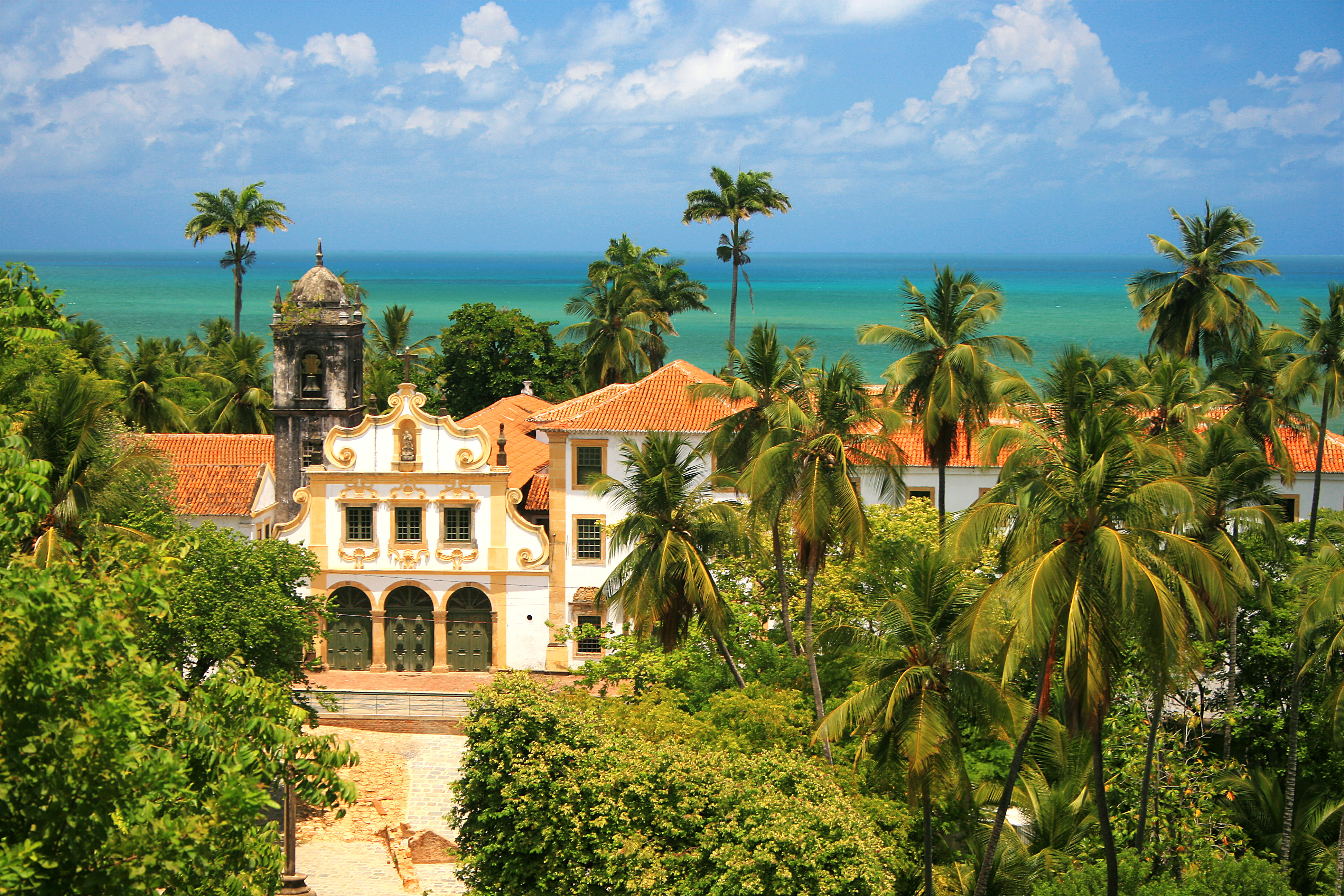
Key Takeaways:
-
Olinda is a vibrant colonial town filled with historic charm, carnival energy, and artistic soul year-round.
-
The city’s colorful streets, art studios, and ocean views make it a perfect blend of relaxation and exploration.
-
From hilltop churches to Afro-Brazilian rhythms, Olinda offers rich experiences for travelers of all interests.
Olinda, located in the northeastern state of Pernambuco, is one of Brazil’s most culturally vibrant and historically significant cities. Founded in the 16th century by the Portuguese, the city boasts colonial-era churches, colorful facades, cobbled streets, and panoramic coastal views. Its name—meaning “Oh, beautiful”—perfectly reflects the charm that draws artists, musicians, and travelers from around the world. Recognized as a UNESCO World Heritage Site, Olinda is also home to one of the country’s most beloved Carnival celebrations. Yet beyond the confetti and costumes, this city pulses with creativity, Afro-Brazilian heritage, and everyday beauty waiting to be discovered in every corner.
Table of Contents
-
Wander Through the Historic Center and Alto da Sé
-
Experience the Magic of Olinda Carnival Year-Round
-
Visit the Museu de Arte Contemporânea
-
Watch the Sunset from Igreja da Sé
-
Explore the Mercado da Ribeira and Local Art Studios
-
Attend a Maracatu Performance or Workshop
-
Enjoy the Beaches of Bairro Novo
-
Take a Day Trip to Recife Antigo
-
Climb the Caixa d’Água Tower for 360° Views
-
Discover Olinda’s Secret Gardens and Courtyards
1. Wander Through the Historic Center and Alto da Sé
The beating heart of Olinda lies in its historic center, where every turn brings another photo-worthy alley, pastel-colored home, or 18th-century church. Walking through this district feels like stepping into a tropical storybook filled with musicians, street vendors, and sweeping views of the Atlantic Ocean. Alto da Sé, the city’s highest point, provides a panoramic outlook and is lined with stalls selling handmade crafts, coconut water, and regional sweets.
Beyond the visuals, the vibe here is warm and authentic, with locals ready to share stories about the city’s rich past and dynamic present. You’ll find capoeira circles in public squares, children playing with kites, and artists painting with the windows wide open. It’s the perfect place to spend hours exploring without a set itinerary. Whether it’s your first time or your fifth, the historic center always feels fresh, festive, and full of life.
2. Experience the Magic of Olinda Carnival Year-Round
Olinda is famed for its vibrant Carnival, where giant puppets, costumed dancers, and brass bands take over the streets in a stunning explosion of culture. But you don’t need to visit in February to get a taste of the celebration—rehearsals, music workshops, and smaller parades happen throughout the year. Groups like the “Bonecos de Olinda” often host exhibitions or mini-performances showcasing the city’s unique parade puppets and dance traditions.
Many cultural centers and community spaces offer weekly samba and frevo dance classes open to the public. You can join in or simply watch and soak in the joyful rhythms that define Olinda’s spirit. From the sounds of maracatu drums echoing through alleys to unexpected street performances, the carnival vibe lives on every month. It’s impossible to walk around Olinda and not feel like you’re part of the celebration.
3. Visit the Museu de Arte Contemporânea
Located in a former Franciscan convent, the Museu de Arte Contemporânea (MAC) blends historical architecture with vibrant modern art. The museum features works by some of Brazil’s most notable contemporary artists, alongside temporary exhibitions that focus on themes like identity, resistance, and Afro-Brazilian heritage. Walking through the high-ceilinged galleries, you’ll experience a creative dialogue between past and present.
The courtyard alone is worth a visit, offering peaceful refuge under leafy trees and artistic installations. Admission is usually free or very affordable, and the museum is rarely crowded, making for a reflective, relaxed experience. Whether you’re an art connoisseur or just curious, MAC adds cultural depth to your Olinda itinerary. It’s a reminder that the city isn’t just preserving history—it’s constantly reinventing it through art.
4. Watch the Sunset from Igreja da Sé
Igreja da Sé, perched at the top of Olinda’s highest hill, is not only a spiritual center but also one of the best sunset spots in the entire region. The church’s whitewashed facade and traditional Portuguese tiles create a peaceful atmosphere during the day. But as the afternoon fades, the plaza fills with locals and visitors gathering to watch the golden hour over the Atlantic.
Street vendors sell tapioca crepes, cold drinks, and artisanal goods as soft music plays in the background. It’s a beautiful scene that turns into a shared moment of awe when the sky lights up in pinks, oranges, and purples. Bring a blanket or grab a seat on the steps—it’s a relaxed, communal tradition that never gets old. Few places capture Olinda’s magic quite like this hilltop lookout.
5. Explore the Mercado da Ribeira and Local Art Studios
Tucked inside a former slave market, Mercado da Ribeira now functions as an art and artisan hub filled with creativity and local pride. The building has been transformed into a series of studios and shops where you can watch painters, woodworkers, and ceramicists bring their visions to life. It’s one of the best places to buy authentic souvenirs and support Olinda’s creative economy.
Each studio has its own personality, and many artists are happy to chat about their work or even give a quick demo. The space is atmospheric and cool, thanks to its stone walls and shaded corridors, making it a pleasant escape from the midday sun. Whether you’re browsing, buying, or just admiring, it’s a must-visit for lovers of handmade, soulful art. It’s also a testament to the resilience and reinvention that defines Olinda’s history.
6. Attend a Maracatu Performance or Workshop
Maracatu is a powerful Afro-Brazilian musical tradition rooted in Pernambuco, and Olinda is one of its spiritual homes. The performances combine drumming, dance, vibrant costumes, and symbolic pageantry that honor Afro-indigenous and royal traditions. Many cultural centers offer maracatu workshops, where visitors can learn about the instruments, rhythms, and history behind the music. It’s more than entertainment—it’s an act of cultural preservation and pride.
Attending a live performance is an unforgettable experience. The pounding drums echo through the colonial streets, often accompanied by processions of dancers in flowing, colorful attire. If you get the chance to join a rehearsal or even participate in a workshop, do it—it’s a visceral connection to Olinda’s African heritage. You’ll leave with a greater appreciation for the energy and identity that makes this city unique.
7. Enjoy the Beaches of Bairro Novo
Though Olinda is known for its hills and historic sites, it’s also home to some peaceful beaches in the Bairro Novo neighborhood. These stretches of sand are perfect for a morning walk, a refreshing swim, or a lazy afternoon under a palm tree. Unlike the more tourist-heavy beaches of Recife, Olinda’s shoreline offers a quieter, more local vibe with beachside bars known as barracas serving cold drinks and fresh seafood.
Weekends bring out volleyball games, samba music, and families enjoying the sun. During the week, it’s often tranquil and uncrowded—ideal for relaxing or reading with the sound of the waves nearby. You can grab a caldinho de feijão (a savory bean broth) or água de coco while watching kids fly kites against the blue sky. It’s a side of Olinda many tourists miss but shouldn’t.
8. Take a Day Trip to Recife Antigo
Just a short drive or bus ride from Olinda lies Recife Antigo, the historic heart of Recife filled with colonial architecture, museums, and waterfront views. A day trip here complements your Olinda visit perfectly, especially if you’re interested in diving deeper into Pernambuco’s cultural layers. Key spots include the Paço do Frevo (celebrating frevo music), the Ricardo Brennand Institute, and the scenic Marco Zero Square.
You can explore the artsy Rua do Bom Jesus, once home to the oldest synagogue in the Americas, and enjoy a boat ride along Recife’s canals. Street art, food stalls, and live music give the area a youthful energy without losing its historical essence. It’s an easy and rewarding extension to your Olinda experience, connecting two of Brazil’s most culturally rich cities in one trip.
9. Climb the Caixa d’Água Tower for 360° Views
One of Olinda’s best-kept secrets is the Caixa d’Água Alto da Sé, a former water tower converted into an observation deck. This cylindrical structure offers panoramic views of the entire city, coastline, and even parts of Recife on a clear day. A small fee gets you access to the spiral staircase and rooftop platform, which feels like your own personal lookout.
It’s especially impressive during sunrise or sunset when the city is bathed in golden hues and the tiled rooftops glow. Informative panels help you identify landmarks and understand the layout of the region. Whether you’re into photography or simply want a quiet moment above the buzz of the streets, this tower provides one of the best perspectives on Olinda’s geography and charm.
10. Discover Olinda’s Secret Gardens and Courtyards
Tucked behind the colorful facades and tall wooden doors of Olinda’s historic homes are hidden gardens and courtyards that feel like miniature oases. Some are open to the public as cafés, guesthouses, or art spaces, offering lush tropical greenery, hammocks, fountains, and mosaics. These spaces feel worlds away from the busy street life outside and are perfect for a quiet break.
Many travelers stumble upon them while walking and are surprised by their tranquility. Enjoy a fresh juice, listen to birdsong, or read a book surrounded by banana trees and blooming flowers. These secret spots are a testament to the peaceful spirit that balances Olinda’s festive energy. Don’t be afraid to step into open gates—some of the city’s most magical experiences are hidden in plain sight.
What to do if you have kids?
Olinda is a colorful and family-friendly city, offering activities that kids can enjoy alongside parents. Street performers, drumming circles, and puppet shows often pop up in the historic center, delighting young travelers with spontaneous fun. The beaches in Bairro Novo are calm and shallow, making them safe for kids to splash and play. Museums like the Museu de Arte Contemporânea and even maracatu workshops often have child-friendly elements that encourage creativity and participation. Bring plenty of sunscreen, snacks, and curiosity—Olinda is a sensory adventure for all ages.
Where can I find free events in Olinda Brazil taking place this weekend?
To discover the best free events happening in Olinda this weekend, head to PlanMyWeekend.ai. Whether you’re into outdoor concerts, art walks, samba circles, or local food markets, the platform will help you uncover what’s happening nearby in real time. Just enter your location and preferences to get a curated list of events suited to your vibe. It’s the easiest way to experience Olinda like a local—without spending a dime.
Final Thoughts
Olinda is more than a postcard-perfect city—it’s a living, breathing canvas of history, music, art, and joy. Every corner offers a new sound, scent, or splash of color, inviting you to explore with your senses wide open. Whether you’re dancing in the street, sipping coconut water by the beach, or gazing at the city from a church tower, Olinda makes you feel connected—to the place, the people, and the moment. It’s a destination that lingers in your memory long after you’ve left.
Author: Dejon Brooks
Dejon Brooks is an entrepreneur who founded Trend Watchers with his life savings. Aged 24, Dejon has turned Trend Watchers into a successful business. After reaching over 150M+ people on his personal accounts, he now spends his time growing Planmyweekend.ai


